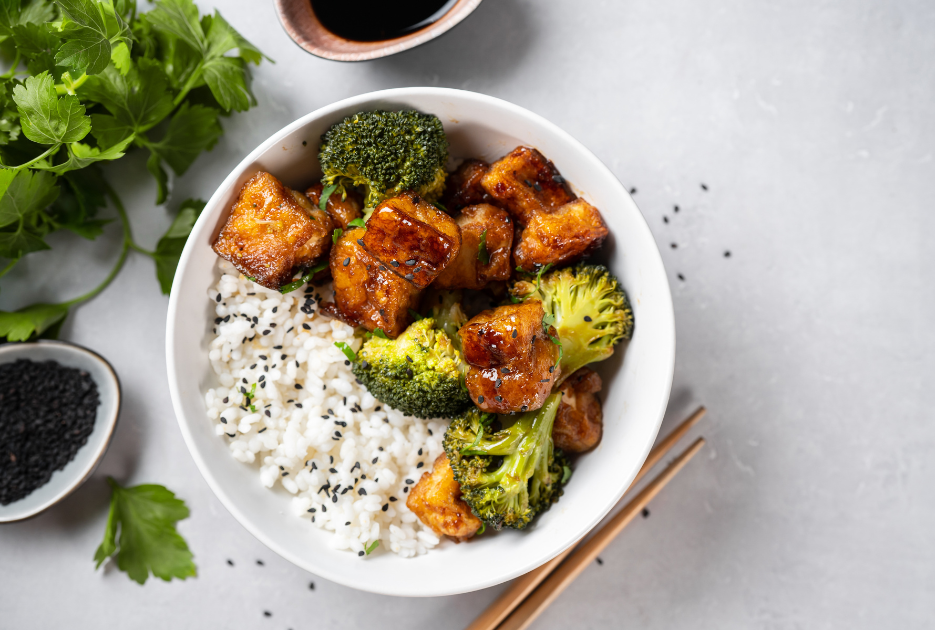How to Turn a Meat Based Recipe into a Vegan Friendly One
One of my favourite things to do (well, perhaps that’s a slight exaggeration) is scrolling through recipes online. When I come across a meat based recipe that looks delicious, it doesn’t put me off at all. In fact, I often see it as a fun challenge: how can I turn this into a meal that works for vegans too?
Whether you’re cooking at home for a vegan friend, managing dietary needs within a household, or running a professional kitchen aiming to make the menu more inclusive, adapting a meat recipe for vegans is completely doable. It’s all about understanding what to look out for and making a few thoughtful swaps that still bring the flavour and satisfaction to the table.
Step one: read the recipe thoroughly
Before you start chopping, take a good look through the recipe. What ingredients jump out as non-vegan?
Meat: This is usually the star of the dish, so you’ll need a solid replacement. Think about what role the meat is playing. Is it minced, shredded, or served in chunks?
Stock: Chicken or beef stock is often added to deepen flavour, but there are excellent vegetable stocks and bouillon powders that work beautifully.
Dairy: Butter, cream, milk, cheese - all of these can often be substituted with plant-based versions or worked around in a creative way.
Eggs: Less common in savoury meat dishes, but if they're there, there are usually alternatives depending on their function (binding, fluffiness, etc).
Step two: pick the right meat alternative
This is where you can get creative. Don’t feel tied to the exact form of meat used in the original.
Mince: Lentils, chopped mushrooms, or textured vegetable protein (TVP) are great options.
Chunks or strips: Tofu, tempeh, or seitan can mimic the texture of meat really well.
Pulled meats: Jackfruit is brilliant here - it has a stringy, tender texture that’s very similar to pulled pork or chicken.
Step three: replacing dairy (and when not to)
Dairy can be a bit trickier. Plant-based creams, milks, and butters are widely available and can usually sub in directly. However, when cooking for people who are used to dairy, I find it’s often more effective to create a new flavour profile entirely, rather than trying to mimic dairy too closely.
Cream: Coconut cream, blended soaked cashews, or oat cream can offer that rich mouthfeel.
Cheese: Vegan cheeses have come a long way, but they still don’t behave like traditional cheese when it comes to melting or browning. Instead of trying to copy it, try nutritional yeast (nooch) for a cheesy flavour, and build depth with mustard, stock, miso paste, or a drop of liquid smoke.
Step four: cooking techniques
There are two main ways to approach cooking your final dish:
Split the sauce: If it’s a saucy dish like a curry or stew, prepare your base and then divide it. Add your meat alternative to one of the sauce pans and your meat to another, letting both simmer and absorb the flavours.
Separate proteins: Cook your sauce or base in one pot, and prepare your protein source in separate pans. This works well when you want to preserve textures, especially for things like crispy tofu or seared tempeh.
This method is also helpful in shared households or hospitality settings where you’re cooking for different diets. You only need to make one sauce, but you can serve multiple dietary needs.
Final Thoughts
It’s all about balance. The goal isn’t to create an exact copy of a meat dish, it’s to make a delicious meal that everyone can enjoy. And the good news? Most people won’t miss dairy or meat when a dish is full of flavour, texture, and heart.
The more you practice, the more intuitive it becomes. You’ll start to recognise which swaps work best for different types of recipes and even come up with your own signature plant-based twists.
What other tips have you picked up along the way? I’d love to hear your go-to vegan hacks for adapting traditional meals. We’re all learning, and sharing ideas is what makes cooking even more fun.
Ready to give this way of cooking a go? Check out my recipes.





